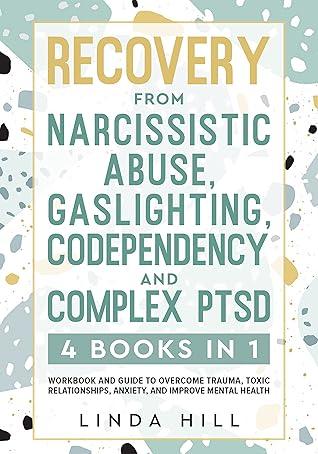More on this book
Community
Kindle Notes & Highlights
by
Linda Hill
Read between
November 22, 2024 - February 3, 2025
Narcissistic Personality Disorder (NPD)
Lack of accountability for their actions, and negative reaction to criticism
those with narcissistic personalities are actually insecure to the point of being self-loathing, which is why they work so hard for attention.
This group is the stereotypical narcissists who openly and unapologetically display the above personality traits. They don’t see how their behavior is wrong or hurtful, and will actually point the finger elsewhere, deflecting all blame or wrongdoing on others.
Malignant: Of all main categories, this group of narcissists are the most toxic and ruthless. These individuals are highly manipulative and seemingly get pleasure from exploiting others. This group is aggressive, controlling, deceitful, and will do anything to dominate. Worst of all, they feel no sense of remorse for anything they do.
Covert: These narcissists are so good at hiding what they do, it makes it difficult for those in a relationship with them to convince others of the truth. They’re sneaky and passive-aggressive in their approach and are able to manipulate without another person’s awareness at first. The vulnerable group is always covert. Because of the very nature of what they do and their high lack of empathy and remorse, those in the communal group can be either overt or covert.
Somatic:
Unclear boundaries or expectations
Highly overindulged by those around them growing
You can’t force someone to respect you, but you can refuse to be disrespected. –Mohammad Rishad Sakhi
Aren’t we doing exactly what they want us to do? Isn’t making them our whole focus what they crave?
Anyone who has tried winning an argument with a narcissist is well-versed in this strategy. This is the act of avoiding an issue or problem by talking around it until the initial subject matter is lost or forgotten.
They jump to conclusions based on what they think rather than on facts.
They often put unrealistic obligations on others using the ‘should’ statements.
They play the emotional card, overshadowing any sense of logical thinking.
First, here are the don’ts in dealing with a narcissist in general:
Never give them ammo.
No matter what they say or do, never give them the satisfaction of knowing they got to you. That’s their main goal, don’t help them make it easier.
You don’t owe them explanations or justifications.
If you want to verbalize their responsibility for their actions for ease of mind, that’s certainly appropriate.
The best way to fight back in your own way is to stick to your values and be true to yourself.
Here are some do’s when dealing with confrontation with a narcissist:
Acceptance doesn’t mean accepting what’s happened to you, it means making yourself conscious of the abuse so you can make positive changes.
The toxic person may have caused you to worry about not acting the way you’re expected to, or that you haven’t done something right or good enough.
you may be constantly blamed when things go wrong even when it isn’t your fault. You may do something exactly the way they tell you to, but they still find fault with the results.
This happens when you try avoiding any sort of conflict, maltreatment or backlash by going above and beyond to make the abuser happy.
can result in long-term mental, physical and emotional effects. To say the least, that isn’t fair, and no person should ever feel they should be permitted to have control over another.
A boundary is an unseen line in the sand. It determines the point you won’t allow others to cross over or they’ll hurt you. These are non-negotiable and others must be aware of them and respect them. But you have to know what those lines are before making them clear to others.
Feelings of unworthiness, shame and blame dissipate over time they never completely go away. Similar to PTSD, one small trigger can be all it takes to relive the trauma.
self-sabotage because we’re convinced we don’t deserve happiness or success.
I didn’t leave because I stopped loving you. I left because the longer I stayed, the less I loved myself.
Step Two: Self-Care Is Priority
Let go of feelings of shame, guilt, or blame by forgiving yourself.
Stay in tune with your inner voice and make sure everything it says to you is positive, loving, and inspiring.
Do not accept any form of toxicity in your new life under any circumstances. You don’t need to be lured back into a world you turned your back on because it hurt you.
The most important of which may be, “How am I supposed to rebuild the person that I was before meeting my narcissistic abuser, when I don’t remember that person anymore?”
how can you forgive yourself for putting yourself in that situation, and staying with the toxic person? That’s
When you’re mentally tough, you only have control over what is within your power.
Mentally tough people refuse to allow others to chip away at their boundaries, and have no problem with saying no.
healthy to take logical, calculated risks to better themselves.
Don’t dwell on the past; let go of grudges and use it as a strength, rather than an excuse not to move forward.
strengthen self-discipline and know that you’ll be okay to venture out once in a while, despite all that you’ve gone through.


